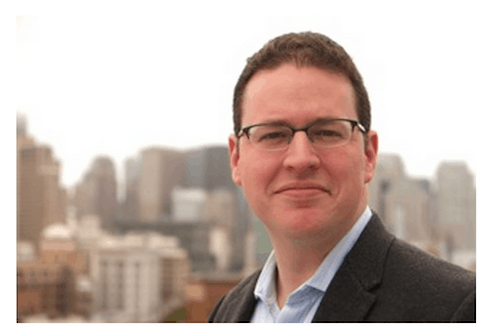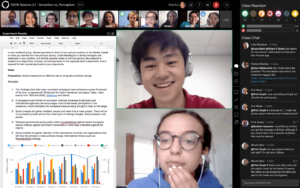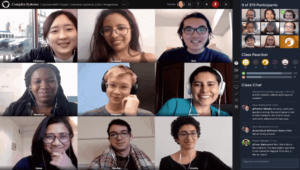Minerva: Better & Cheaper HigherEd

I met Ben Nelson two years ago in a funky Latin American dive in San Francisco’s Mission District. He laid out a wonderfully ambitious plan to create a great elite university with tuition of $10,000 a year. He wanted to significantly better the Ivy’s on both quality and cost and he wanted to serve the smartest young people on the planet.
It’s those moments–when, with animation and passion, an edupreneur describes an ambitious plan to change the world–that I have most enjoyed about the last 15 years of impact investing. Sometimes, I smile and think to myself, “that will never happen.” But with Ben, the former CEO of photo giant Snapfish (sold to HP in 2010), I immediately knew that the vision was entirely possible and that he actually had a shot at pulling it off.
Ben founded Minerva Project (@minervaproject) and, in the two years since that dinner, has pulled together an extraordinary team. Former Senator Bob Kerrey is board chair because he believes Minerva is “The single most important innovation in higher education in my lifetime.”
Yesterday Ben sent the letter below to friends of the project. I’m not an investor, but I am an admirer. It’s this kind of story that that embodies everything that is right about this country. I’m confident that starting this fall Ben and his team will deliver a world class education at a community college price.
—-Ben’s update on Minerva–
This fall, we will welcome our first students to San Francisco where they will embark on an educational journey like no other. Though we have quite a year ahead of us, I wanted to take a moment to reflect on the milestones achieved as we continue to build an extraordinary university experience without equal for the brightest, most motivated students from around the world.
A Look Back – The Faculty, The Schools and An Accessible Education
Two years ago this month, I began the funding process for the creation of Minerva. I explained to prospective investors that several things would have to be true for Minerva to become a reality. At the time, the entire list looked highly improbable, including the required initial capital to put Minerva together. Yet, Benchmark Capital, among the world’s most respected venture firms, took what is perhaps the single biggest bet on one person’s idea in the history of Silicon Valley. Even so, I could not have imagined then how far we would actually come in converting the vision of Minerva into a reality in 24 short months.
The Minerva Schools at KGI
Last summer, we joined with the forward-thinking KGI (Keck Graduate Institute), a WASC regionally accredited institution, to launch the Minerva Schools at KGI (currently pending WASC approval). Since its inception 15 years ago, KGI has been the most influential pioneer in graduate applied life science education in the world – and now with Minerva – is looking to have similar impact across a broader spectrum. Together, the Minerva Schools at KGI will offer 20 redefined concentrations across computational, social, and natural sciences, as well as the arts and humanities and business. The Minerva scaffolded curriculum is shaping up to be even more powerful than we first imagined, and has been hailed as the most exciting innovation in higher education today by scores of leading academics.
The Faculty
Early last year, Dr. Stephen Kosslyn, world-renowned scholar and former Dean of Social Sciences at Harvard, joined Minerva as Founding Dean, and supervised the hiring and curriculum development for each of the Colleges within the School of Arts and Sciences. Four additional Deans were selected to lead the colleges within the School: Dr. Eric Bonabeau, best-selling author and one of the world’s leading experts in the field of complex systems, joined as Dean of Computational Sciences; Dr. Diane F. Halpern, whose work in the field of psychology is considered groundbreaking and pivotal, especially with respect to critical thinking and gender differences in cognition, took the role of Dean of Social Sciences; Dr. Daniel Levitin, award-winning professor, researcher, writer, and musician came aboard as Dean of Arts and Humanities; and Dr. James D. Sterling, also serving as Vice President for Academic Affairs at Keck Graduate Institute (KGI), joined as Director of Minerva Labs and interim Dean of Natural Sciences.
An Accessible Education
In September, we laid out our vision for how to provide a superior educational experience at a fraction of the cost of current offerings. The formula was straightforward. First, do not charge for commodity information transfer, which can easily take up half of a student’s time at peer institutions. Second, invest that time in delivering an integrated program of intellectual development where courses build on one another through intensely participatory seminars limited to 19 students. Third, provide an immersive global experience across seven world capitals over the four-year program, exposing students to the best the world has to offer, instead of a poorly replicated microcosm in an expensive campus environment. This philosophy not only allows us to set our tuition at $10,000 per year (equivalent to the tuition of private universities nearly 50 years ago, adjusting for inflation), but also provides us the ability to admit all qualified students—something no other highly selective university in the world has been able to do.
A Look Forward – The Founding Class, Technology Platform, and Student Experience
Looking ahead, I believe 2014 will prove to be a watershed year for Minerva, for a wealth of reasons.
The Founding Class
Interest in our Founding Class has exceeded all expectations with applications received from more than 75 countries. Based on the number of applications, we know that Minerva will be one of the most selective undergraduate programs in the world. Yet, as the vision was always to make a Minerva education accessible, we are now exploring the possibility of expanding our Founding Class to include a second section. Because we recognize that we will have limited space in 2014 and won’t be able to accommodate all qualified students, we will offer any student we cannot fit in 2014 the opportunity to join Minerva early, as part of the incoming class in 2015. Applications and nominations for the Founding Class are open until April 15, 2014.
Technology Platform
This year will mark the unveiling of our technology platform, which will change what people think is possible at the intersection of technology and higher education. Having assembled a team of technology experts and developers who are among the most talented, imaginative and innovative in the world, we have been working on connecting students and faculty located in cities around the globe in a way never seen or experienced before. Our goal is to create active learning environments that improve upon the very best offline classroom experiences and we are well on our way.
Student Experience
Minerva’s vision has always been to give students an opportunity to experience the best the world has to offer across several global capitals. The first residence hall delivers on that promise as we have secured a fantastic building in a wonderful San Francisco neighborhood. We are confident San Francisco will provide a great setting for the vast array of co-curricular and extra-curricular experiences we are planning. Later this year we will unveil the next two cities where, in the fall of 2016, we will have residence halls ready for our first class of students’ sophomore year. With Minerva personnel in six countries across five continents, we are crafting an integrated program for students that will hopefully redefine the standard to which the best universities will strive.
During the last two years Minerva has been created against all odds and, to my surprise, almost exactly according to plan: from raising a historic investment round, to recruiting an academic team that is the envy of any university, to building a technology platform that was not technically possible just a year ago, to attracting some of the most coveted students from around the world. We are conscious that we have barely begun and that we will need to continue to execute at the highest levels in order to stay true to our mission of leading the world of higher education to a higher quality, lower cost, and more accessible future. If there is one thing that we have proven over the past two years, it is that this vision is very much a possibility.








Nancy Weinstein
Curious about the specific "no more than 19 students per class"? Is there research validating that specific number? I've heard lower numbers for elementary and middle school, e.g. 16/17 in elementary and 12-15 in middle school.
Replies
Tom Vander Ark
There's little research to support old rules of thumb on class size and
new tools and school models are causing a fundamental rethinking of the subject (What is a class? How do teachers interact with a group of students? How do students matriculate through a system?). Check out OpportunityCulture.org & CompetencyWorks.org for some answers.
Chris Broughton
I'm interested to see a profile of the founding cohort and how they were selected. Does anyone know how what criteria they are using for admitting students into the program?
Tom Vander Ark
Stephen Kosslyn, dean of students, said:
Everything we are doing is driven by what we want the students to do after they graduate, namely: develop into leaders, be innovators, be broad, and think globally. We are using a set of cognitive and non-cognitive tests to assess characteristics of leaders and innovators, plus we are using grades, accomplishments, and the results of a structured interview.
These various factors are combined into a "holistic" assessment, where various factors can compensate or tradeoff against each other.